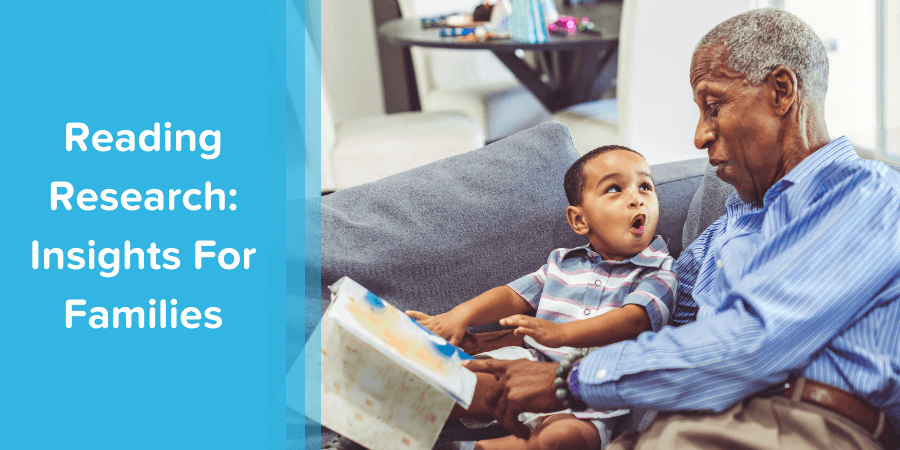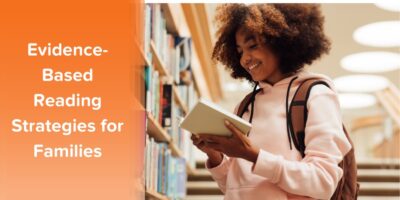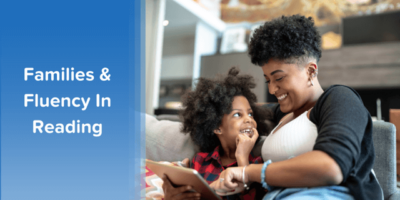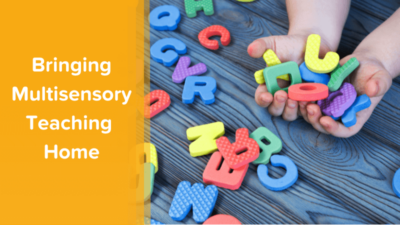By Maren Madalyn, contributing writer
From ongoing conversations about literacy intervention strategies to more recent reflections about the impact of the past few years’ chaos on reading scores — the topic of reading seems to be everywhere in the news these days.
There is no debate, however, about the power of reading in one’s life. Learning how to read is a fundamental skill for kids to thrive, both in school and later on as adults in the world. Parents, school administrators, researchers, district leaders, and teachers alike share a passion for ensuring that every child becomes a successful reader.
And yet millions of kids and adults in the United States struggle to read to this day. Why?
Though this question is simple, its answer is not. There are a plethora of studies examining what factors impact literacy achievement and development — so many, in fact, that educators may feel overwhelmed trying to keep up with the latest scientific findings.

So we pulled together a series of reading research insights with the goal of helping educators and families better collaborate with one another in service of their students’ literacy education. With shared knowledge and understanding of how kids learn to read, families and schools together can create a future filled with skilled readers!
What research says about effective literacy development
But first, let’s take a step back and start with unpacking the science of reading — which is key to understanding why reading research insights matter not only to educators, but to families, too.
There have been countless empirical studies across multiple disciplines about literacy education, from cognitive science to linguistics to education psychology to neuroscience. In all of these investigations, researchers wanted to understand how humans learn to read and what teaching strategies are most effective in building literacy.
The science of reading refers to this extensive body of reading research insights that paint a picture of the learning path to skilled reading. It isn’t a curriculum, or even a specific teaching strategy. Instead, you can think of it like a set of guiding principles, informed by results generated from hundreds of studies, over and over again. Educators can leverage the science of reading to infuse their instruction with evidence-based practices that emerge from this background knowledge.
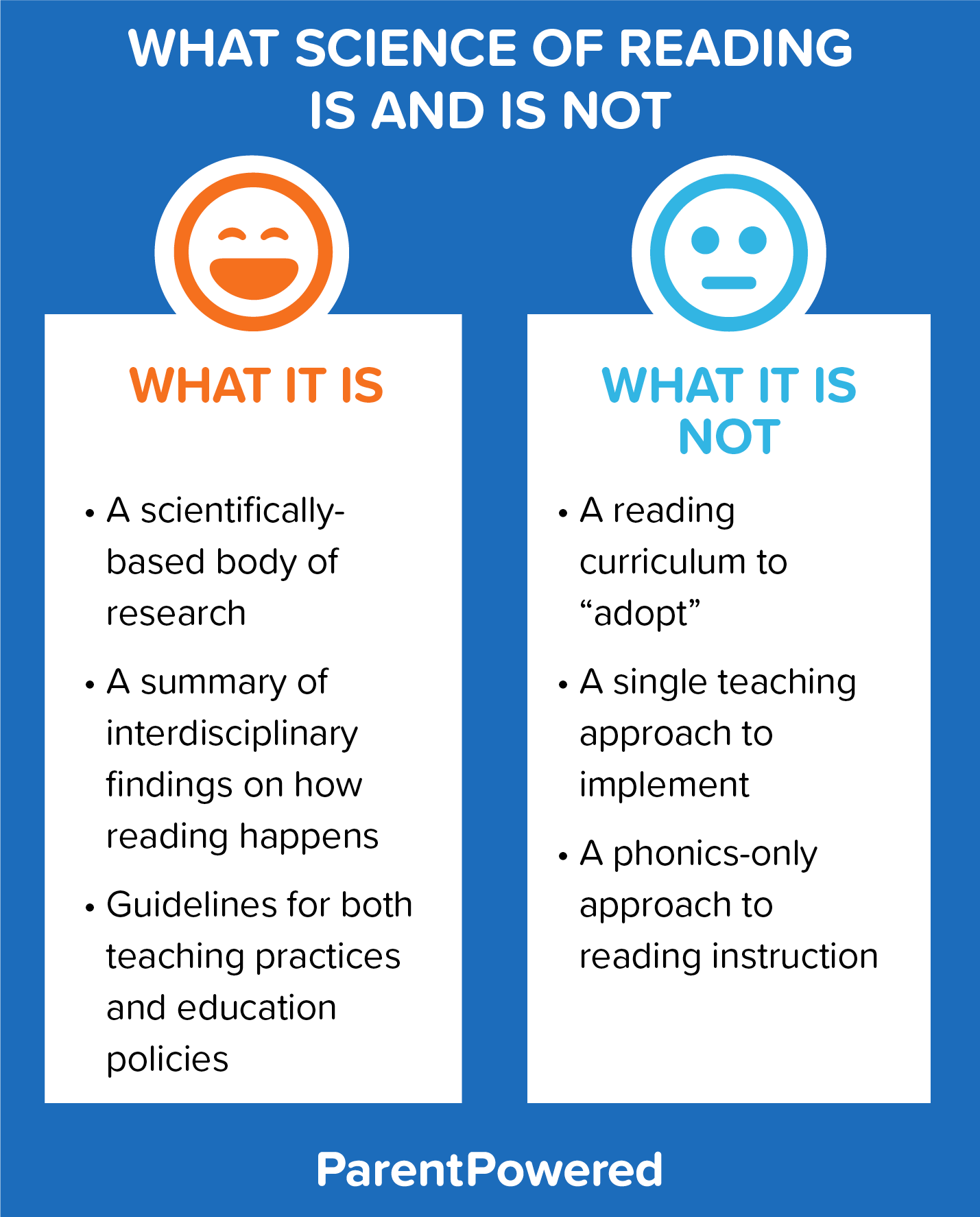
For example, one of the core insights we discuss in this article is the importance of explicit, systematic instruction for teaching fundamental reading skills. When translated into practice, explicit instruction means that kindergarten teachers must directly teach the individual letter-sound combinations with strategies like movement and sound play, in addition to indirectly exposing children to new words by reading aloud to them. Systematic instruction means educators also approach teaching each combination methodically, following a clear step-by-step process.
These principles aren’t just valuable for educators in the classroom, either!
Family engagement and literacy go hand in hand
If you’re at all familiar with ParentPowered, you know how strongly and positively we feel about the power of family engagement! Families are the first teachers in any child’s life, and they make for an invaluable partner in supporting schools to nurture each student’s reading journey.
In fact, research has shown that when families are actively involved and collaborate with their schools, a whole slew of literacy-related outcomes are impacted, including increased reading academic achievement and increased positive feelings about reading in children. With the fervent conversations happening among teachers and parents right now about reading, it’s critical for educators to build shared understanding with their community around what research tells us about effective literacy instruction.
So what reading research insights can educators translate to families to inspire and invite them into collaborative partnership, all in service of their child’s learning?
Top 7 reading research insights to share with families
ParentPowered has been at the forefront of providing evidence-based, equitable, everyday learning activities to families, all geared toward bolstering their children’s growth and development.Here are the top seven reading research insights that put literacy into context and empower families to connect the positive impact that their engagement has on student reading skills development.
1. Oral language is the foundation of reading
Children may learn to speak long before they begin recognizing written letters and words, but oral language development is just as critical for skilled reading later in life. Phonological awareness is the skill that kids build to recognize and use the sounds in spoken language. Having strong phonological awareness means a child is set up to later associate those letter sounds with their written counterparts.
This is why daily, language-rich exchanges between adults and their young children is so essential for future reading success. And there are many opportunities for families to practice building phonological awareness as part of their everyday home routines!
Here’s one example of a family-friendly activity perfect for toddlers that boosts these language skills, sourced from the ParentPowered Core family engagement program:
- FACT: Rhyming games are a great way to build your child’s knowledge of sounds. As your child rhymes, they learn that words can share common endings.
- TIP: As you give your child’s spoon to eat, say words that rhyme with spoon: moon, soon, cartoon… Can your child say the rhymes, too?
- GROWTH: Keep rhyming. Now say words that rhyme with book. Try: look, took, nook… add silly words too (splook, zook). Can your child add a rhyme?

2. Language acquisition (and therefore, reading) starts at birth
Did you know that the moment a child is born, they’re already learning oral language skills? This means that families can nurture future literacy skills in their little one from day one!
On the other hand, when language development begins so early in life, so too can inequities in literacy emerge in young children — even as early as just two years of age (Fernald et al, 2013). For early childhood educators especially, it is critical to recognize the important role that families play here, and to empower parents with accessible ways to nurture a language-rich experience for their infants. These efforts set up children to become skilled readers in the future.
ParentPowered offers a myriad of activities for families with babies that don’t require extra resources or even a ton of time to do together. Here’s one of our favorite activities:
- FACT: Babies are social and love interacting with YOU most of all! A great way to interact with your baby is to copy their sounds. It’s a conversation!
- TIP: After feeding, spend some time lying next to your baby and copying their sounds. When they coo, coo back. Copy all of your baby’s little sounds!
- GROWTH: Keep copying your baby. Now copy your little one’s actions. When they look at you and smile, look at them and smile back!

3. Children must learn skills across five key areas to become independent readers
Phonological awareness is only one of five critical skill sets that kids need to learn to become strong readers. The other key components include:
- Phonics (associating sounds with letters)
- Reading fluency (decoding words and sentences smoothly)
- Vocabulary (knowing words and their meanings)
- Comprehension (understanding written text as a whole)
These five areas of literacy come from the National Reading Panel’s report released in 2000, which summarizes the necessary ingredients for reading development.
The good news here is that — you guessed it! — families can help nurture each of these five areas of literacy with their kids at home, just as preschool and elementary teachers help their students practice these skills in the classroom. Here are two easy activities for families with kids in elementary school to build their fluency in reading and vocabulary development:

- FACT: At 6, children do more and more reading. You can help your child become a confident reader by giving them lots of chances to sound out short words.
- TIP: At the store, ask your child to help you by reading labels. Can they sound out the word MILK on the carton of milk and JAM on a jar of jam?
- GROWTH: Keep sounding out short words! Now give your child the chance to write some of these words as they help you make a grocery list. Can they write MILK?

- FACT: Describing how something looks, tastes, or feels brings kids’ writing to life. After all, ice cream is good, but creamy and sweet ice cream is better!
- TIP: During dinner, take turns describing how food on the table feels or tastes. Try, “This bread is soft and fluffy.” Or, “This carrot is sweet and crunchy.”
- GROWTH: Keep describing things! Now put your child in charge of writing a grocery list. For every food, have them add a detail — apples become juicy apples!
4. Skilled reading means practicing all parts of it
Building off the previous reading research insights, while it is important for children to cultivate each of these skills, it’s really the interactions among them that results in successful reading.
Gough and Tunmer’s Simple View of Reading model clarifies this relationship by organizing the components of literacy into two buckets, word recognition (vocabulary, reading fluency) and language comprehension (phonological awareness, phonics). Word recognition interacts with language comprehension (and vice versa) to produce reading comprehension skills.
This matters because if students struggle with either bucket, they ultimately struggle with reading comprehension overall. For educators and families, kids need more than comprehension strategies to be effective readers — all these skills are essential!
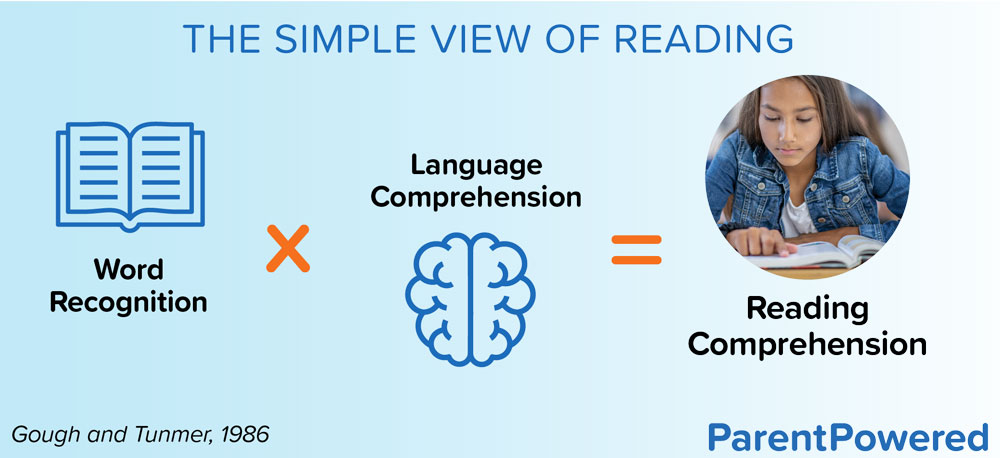
Need a comprehensive, evidence-based approach to help families cultivate all five skill areas of reading at home? ParentPowered has your back! Watch a demo of our ParentPowered Core and Trauma Informed programs to discover how high-impact, low-lift family engagement benefits literacy development.
5. Explicit and systematic instructional approaches are most effective
Though there are many unique strategies that educators use to support literacy development, research insights coming out of the science of reading indicate that children need to be explicitly and systematically taught the building blocks of literacy. In other words, unlike oral language, kids won’t learn how to read as effectively just by listening to stories read aloud or figuring out the letters of the alphabet on their own.
These characteristics are especially important when it comes to phonics instruction. Methods like the Orton-Gillingham-based approach offer educators a clear model for how to explicitly and systematically teach phonics to students. Sometimes, these methods will also employ multisensory teaching strategies, which can be supportive for kids with or at risk of dyslexia and other reaching difficulties. So long as the instructional strategies are clear and structured, the research says, educators are setting their students up for successfully learning to read.
Curious about multisensory literacy activities for home? Here’s one method beloved by families supported by the ParentPowered Trauma-Informed program, perfect for kids in second grade:
- FACT: Listening for sounds in words builds the skills kids need to sound words out. Sounding words out is a key step to reading more challenging words.
- TIP: Play “Listen & Step” before bed. Say, “Listen for the /sh/ sound like the /sh/ in dish. If you hear it step to bed.” Try words like fish, shell, and push.
- GROWTH: Keep listening. Now use words that have a /sh/ sound and some that don’t. Say, “Only take a step when you hear /sh/ .” Try shop, dish, wash, boat

6. “Invisible skills” impact literacy, too
Learning how to read requires much more than just these five skill areas we’ve highlighted so far. Persistence, mental focus, positive sense of self — all of these and more “invisible” skills can contribute to a child’s literacy development. Better still, they also positively influence their reading experience, making it enjoyable and an activity they want to come back to over and over.
This reading research insight is especially important for educators to communicate and reinforce with families. When families support their kids to build these and more social-emotional learning skills, they might not realize that they’re also building their children’s reading skills! Educators can help families connect the dots between activities that boost kids’ self-confidence and its impact on literacy.
This ParentPowered activity is a family favorite for cultivating these “invisible” reading skills in upper elementary school grades:
- FACT: Kids grow when they set goals and then reach them. Setting and reaching goals builds independence and good work habits. It also builds pride!
- TIP: After school, ask your child to set a reading goal for the evening. Ask, “ How many pages would you like to try to read tonight?”
- GROWTH: Keep setting goals. Set a goal for the week. Ask, “How many pages would you like to try to read this week?” Post the number on the fridge.

7. Equitable family engagement can help address literacy gaps
It’s no secret that the COVID-19 pandemic has had a resounding impact on the education world, including student reading development. Reading research insights comparing academic achievement before and during the first school years affected by the pandemic show the widening gap in literacy between student groups. Bilingual students, for example, experienced fewer gains in reading comprehension than their monolingual peers for their age group (Sun et al, 2022).
These inequities in literacy aren’t necessarily new challenges for educators, but they risk worsening in the aftermath of the peak pandemic years.
The good news is that by deploying strategies for equitable family engagement, educators can reduce the ripple effect of these consequences — and even reverse them. Research has shown that family engagement is particularly beneficial for traditionally underserved families and students, including those whose reading skills were most impacted by the pandemic.

Equity in education in the literacy context means every child has the opportunity to thrive as a reader, and family engagement offers an excellent pathway by which educators can bring this vision to life.
Take a look at these ParentPowered resources for educators all about building culturally responsive and equitable family engagement approaches:
- 4 Strategies for Culturally Responsive Family Engagement
- Crafting Communications That Connect with Families
- Building Joyful Relationships with School Families
ParentPowered gives families easy, impactful, evidence-based ways to boost reading skills
It’s worth remembering that each of these insights is just a sampling of the many gleaned from reading research over recent years. Looking ahead, there will surely be more discoveries added to this background knowledge as researchers continue to study this complex capability. And that’s ok! In the end, even if our understanding of reading evolves, the importance of family-school partnerships will remain a constant foundation.
ParentPowered has partnered with hundreds of schools, districts, and community-based organizations to help educators cultivate positive relationships with their families, ones founded on collaboration and mutual respect, through evidence-based family engagement curricula. Join an upcoming info session to learn how our programs can help your students thrive in their literacy!
About the author
Maren Madalyn has worked at the intersection of K12 education and technology for over a decade, serving in roles ranging from counseling to customer success to product management. She blends this expertise with fluid writing and strategic problem-solving to help education organizations create thoughtful long-form content that empowers educators.

